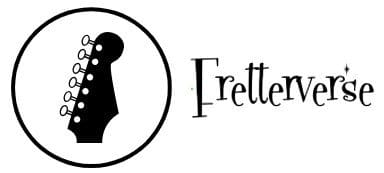Introduction to the Lydian Scale
Imagine the first moment you struck a chord that didn’t just resonate with your ears but seemed to open a new emotional dimension. For me, this was the day I stumbled upon the Lydian scale on my guitar. That seemingly innocuous discovery didn’t just change my playing; it altered my entire approach to music theory. The Lydian mode, with its mystical and uplifting qualities, offers a fresh spectrum of expressive possibilities that many guitarists overlook. Now, every note I play carries the potential to evoke profound emotion.
In this guide, I’ll walk you through mastering the Lydian scale on the guitar, drawing not just from music theory but also from my firsthand experiences. We’ll dive into the structural makeup of the scale and explore practical applications, including improvisation and integrating Lydian with other scales. Whether you’re setting practice goals or searching for resources, my journey with the Lydian scale will inform your own, opening up that evocative world of sound and feeling. Come along as we explore the nuances and power of the Lydian scale together.
Understanding the Lydian Scale
Theoretical Foundations
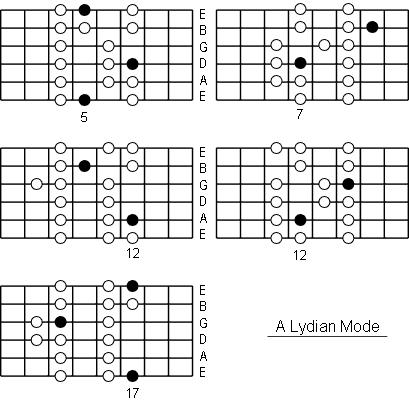
What makes the Lydian scale stand out in the world of modes? It’s the distinctive quality born from its unique interval structure that captivates musicians and deepens the exploration within the realm of *music theory*. As we delve into its foundational aspects, it’s essential to grasp how the Lydian mode, characterized by its raised fourth, diverges from the traditional major scale. This alteration imbues the mode with a *bright and ethereal sound*, pivotal to a guitarist’s expressive toolkit.
Drawing from my deep knowledge of music theory, I vividly recall the moment I first understood the transformative potential of the Lydian mode on the guitar. That sharp fourth interval introduces *tension and resolution*, offering a gateway to innovative musical landscapes. Learning this scale structure doesn’t just enrich your *modal vocabulary*—it revolutionizes your creative expression, allowing for more dynamic and emotive performances. As we move forward, we’ll explore how understanding this theoretical groundwork paves the way for deeper musical insight and mastery.
Lydian Scale Structure
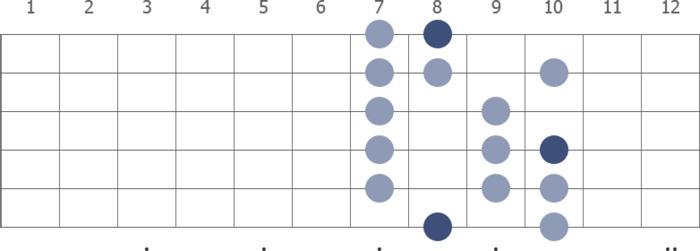
Have you ever wondered why the Lydian scale sounds so different from the major scale? The answer lies in its unique structure, which captivates musicians and listeners alike. Understanding the Lydian scale involves recognizing its distinctive arrangement of intervals, which sets it apart. The Lydian scale is a type of major scale characterized by a raised fourth degree. This simple alteration imbues it with a bright, almost ethereal quality.
As a guitarist with extensive experience in transcription and engraving, I’ve found that visual aids such as a Lydian scale diagram are invaluable for grasping the nuances of this scale. When we look at guitar scales, the Lydian pattern emerges vividly, emphasizing that pivotal raised fourth. This structural shift not only differentiates it sonically but also alters the scale’s emotional palette, offering new creative possibilities. Whether you’re visualizing on the fretboard or exploring its theoretical aspects, recognizing this fundamental structure is crucial. It serves as a bridge to mastering the Lydian scale, enhancing both your understanding and retention by grounding you in its unique musical identity.
How to Play the Lydian Scale
Lydian Scale Exercises
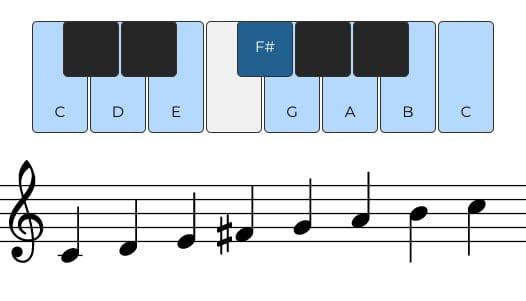
In my journey to mastering the Lydian scale on guitar, I’ve discovered how critical it is to engage in targeted exercises that not only refine technique but also deepen understanding. So, what exercises can unlock the true potential of the Lydian scale on your guitar? As I delve into Lydian scale exercises, I emphasize the importance of incorporating drills that enhance finger dexterity while fostering an intuitive grasp of its sound and feel. By practicing alternate picking patterns, you enable your fingers to maneuver through the unique intervals of the Lydian scale fluidly. Additionally, sliding between the characteristic sharp fourth and the perfect fifth can train your ear to recognize the scale’s defining sound. These exercises, interwoven with targeted guitar training, profoundly contribute to your overall prowess. Through consistent practice, you’ll find yourself not merely playing the Lydian scale, but truly expressing it in your music.
Lydian Scale Licks

Could the right lick transform your improvisation with the Lydian scale? With my experience in jazz guitar, I’ve found that incorporating Lydian scale licks can significantly elevate a guitarist’s soloing. These licks don’t just randomize notes but serve as expressive musical phrases that vibrantly highlight the ethereal quality inherent in the Lydian mode. When learning ‘How to Play the Lydian Scale,’ the transition to applying these licks becomes pivotal in mastering its unique sound.
Each lick I’ve curated is crafted to embody that signature #4 interval, all while weaving through intriguing melodies that jazz guitarists adore. By implementing these licks, you’ll add memorable phrases to your improvisational toolkit, effectively transforming scales into compelling stories. This focus on articulation and expression parallels with our exploration of Lydian’s structural nuances, encouraging a deeper understanding of its distinctive character.
In the following sections, we’ll explore practical applications, moving beyond theory to integrate this vibrant modality into your improvisational skillset. Understanding these licks will provide essential, creative building blocks, bridging the gap between scale knowledge and dynamic musical expression.
Practical Applications of the Lydian Scale
Using Lydian in Improvisation

As we venture into the expressive domain of guitar improvisation, the Lydian scale stands out as a potent tool for elevating your musical creativity. How can the Lydian scale elevate your improvisation skills? By unlocking the distinctive Lydian sound, musicians can access a world of melody that is both vibrant and ethereal, setting your improvisations apart with a unique flair.
Incorporating the Lydian mode into your improvisation sessions is akin to adding a splash of color to a black-and-white sketch. Its raised fourth scale degree introduces a sense of suspense and brightness that can transform mundane melodies into captivating narratives. From personal experience, I’ve found that understanding this characteristic of the Lydian scale allows musicians to enhance melodic improvisation, helping elevate their expressions to a higher level. This scale acts as both a challenge and a canvas, broadening the harmonic landscape I can explore on the guitar.
When applied thoughtfully, the Lydian scale becomes a powerful avenue for creativity. As we progress, consider how to integrate the Lydian scale with other scales, making your improvisation dynamic and full of life, setting the stage for innovative musical exploration.
Integrating Lydian with Other Scales

What happens when you blend the Lydian scale with other modes? This intriguing question unlocks a realm of melodic possibilities for guitarists eager to explore **diverse harmonic landscapes**. With a keen eye for how different scales interact, I’ve discovered that integrating the Lydian scale with other guitar modes doesn’t just add variety; it expands the emotional and sonic depth of your music. When you mix Lydian with, say, the Dorian or Mixolydian modes, you create **rich harmonic palettes** that push your compositions and improvisations into new territories.
Having delved deeply into these relationships, I’ve found that the Lydian scale serves as an *anchor*, a distinctive starting point that allows each subsequent mode to shine. This approach enhances your playing by facilitating smoother transitions and creating unexpected contrasts. Whether you’re crafting a solo or composing a piece, the ability to merge Lydian with other scales can transform your music, offering *unanticipated layers* that captivate listeners.
Tips for Effective Lydian Scale Practice
Setting Practice Goals

As a seasoned educator and guitarist, I’ve discovered that setting practice goals is vital when mastering the Lydian scale on guitar. But what are the keys to setting practice goals that actually work? The answer lies in creating objectives that are both measurable and motivating. These goals should align with your overall understanding of how to play the Lydian scale, ensuring each practice session contributes effectively to your progress.
Setting specific and achievable targets enables you to track your learning journey. Whether it’s honing your ability to seamlessly transition between positions or enhancing your improvisational skills using the Lydian mode, setting clear goals empowers you to focus your efforts and measure your advancements. This not only injects purpose into each session but also cultivates a rewarding practice routine that keeps you engaged. Remember, effective practice is not about logging hours but making each moment count toward mastering those enchanting intervals of the Lydian scale. With well-structured goals, you can transition smoothly to the intricacies of Lydian scale exercises and licks, ultimately weaving the Lydian sound into your unique guitar voice.
Resources for Lydian Scale Learning
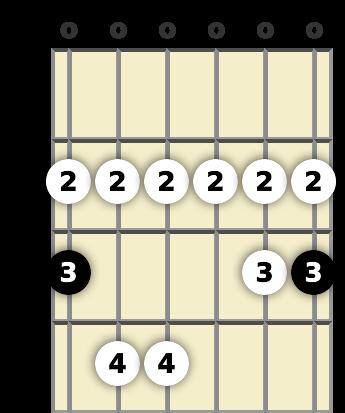
Where can you find the best resources for mastering the Lydian scale? Delving into this distinct musical mode requires a strategic approach, enriched by quality materials. As you explore the ‘Tips for Effective Lydian Scale Practice’, these resources become indispensable allies. My expertise in guitar training allows me to share some of the most impactful materials available, designed to elevate your understanding and proficiency.
Books like *The Guitar Grimoire* offer extensive Lydian scale exercises, providing a solid foundation for those starting out. Meanwhile, instructional videos on platforms such as YouTube enable you to see the scale in action, enhancing your ability to apply theoretical concepts practically. Online guitar training courses also play an essential role, giving you guided pathways to refine your technique.
These resources aim to transform abstract theory into tangible skills. They not only bolster your existing practice routine but also inspire creative exploration. By integrating these tools, you turn the complex landscape of the Lydian scale into a well-charted map, paving the way for confident improvisation and seamless integration with other scales.
FAQs
What is the Lydian Scale on Guitar?
How do I play the Lydian Scale on guitar?
What are some tips for mastering the Lydian Scale?
How can the Lydian scale be used in improvisation?
Conclusion
As I reflect on our comprehensive exploration of the Lydian scale, I’m reminded of its transformative impact on my own guitar journey. Is mastering the Lydian scale the missing piece in your musical journey? This question beckons every guitarist eager to infuse their improvisations with a fresh, evocative flavor. Throughout this guide, we’ve delved into the **theoretical foundations** and practical applications essential for integrating this vibrant scale into your playing.
By understanding its unique structure and embracing targeted exercises, I’ve unlocked nuanced expression and *unmistakable tonal colors* in my music. *Incorporating the Lydian scale into your routine* isn’t just about technical skill—it’s about embracing a new horizon of creativity and emotion in your improvisations. Remember, the journey with the Lydian scale doesn’t end here; it’s a lifelong exploration. I encourage you to continue experimenting with it alongside other scales, refining your distinct musical voice. Let the Lydian scale be your gateway to new dimensions of musicality.

